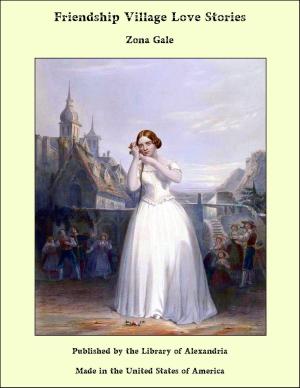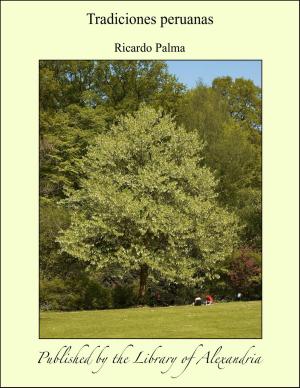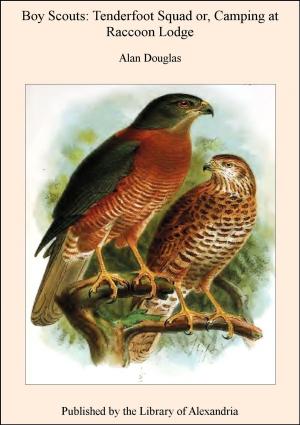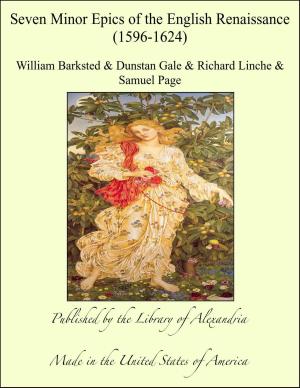The Master-Singers of Japan
Nonfiction, Religion & Spirituality, New Age, History, Fiction & Literature| Author: | Clara A. Walsh | ISBN: | 9781465536068 |
| Publisher: | Library of Alexandria | Publication: | March 8, 2015 |
| Imprint: | Language: | English |
| Author: | Clara A. Walsh |
| ISBN: | 9781465536068 |
| Publisher: | Library of Alexandria |
| Publication: | March 8, 2015 |
| Imprint: | |
| Language: | English |
IN times when everything relating to the history and literature of Japan has become of such vivid interest to the people of this allied Island-Empire, these attempted renderings into English of well-known Japanese poems may prove acceptable, especially to those who may not have time or opportunity to study the works of great Oriental scholars. The dainty grace and beauty of the original poems, with their impressionist word-pictures, are unfortunately easily lost in the endeavour to “English” them. It is scarcely possible to convey the full meaning of the shorter poems to English readers, without elaboration of the original theme, when at once they cease to be “Japanesque”; just as the unerring instinct and delicate harmonies of Japanese bird and flower paintings would be ruined by over-elaboration of details. Mr. Stewart-Dick has well said, “In art, the European requires that everything should be stated with the utmost fulness of a tedious realism, before he can grasp its meaning, but to the more cultured Japanese a mere hint or slight suggestion is sufficient.” The majority of Japanese poems are little odes of five lines, of thirty-one syllables; some “Hokku” contain but seventeen. There are, of course, some of greater length, such as the “Naga Uta”—Long Lays of the Manyoshiu. Wherever possible I have tried to give as literal a rendering as I could, but here and there an additional line has seemed necessary in order to convey the meaning to readers unacquainted with the original. Most of the earlier poems in are taken from the Manyoshiu, or “myriad leaves collection,” an anthology of verse (to quote Mr. Dickins) “wholly Japanese in diction and phrasing … and exhibiting almost the oldest, perhaps the truest, certainly the most pleasing portraiture extant of the Japanese world in its archaic age.” The exact date of its compilation is matter of controversy, some writers contending that it was compiled by Yakamochi (who died A.D. 785); Others claim that Moroye (died 767) commenced the task, which was completed by Yakamochi. The dates of the Lays range from. about A.D. 347 to 759, a period of over four hundred years. Some of the Lays appear to be elaborations of still earlier poems, found in the Kojiki, or Ancient Annals, A.D. 712, containing the mythology and primitive history of the nation. The following, from its pages, is said to be the oldest poem in Japanese language—the version is that of Mr. Dickins: Lay attributed to the God of Eight Thousand Spears Of spears countless, His Majesty the God, In all wide Yashima He sought, but found no spouse. In far-off Koshi, a virtuous damsel dwelt, So heard the God—So went He, her well wooing, His glaive in belt still girded, His veil unloosed. “And here I stand,” quoth He, her door to open
IN times when everything relating to the history and literature of Japan has become of such vivid interest to the people of this allied Island-Empire, these attempted renderings into English of well-known Japanese poems may prove acceptable, especially to those who may not have time or opportunity to study the works of great Oriental scholars. The dainty grace and beauty of the original poems, with their impressionist word-pictures, are unfortunately easily lost in the endeavour to “English” them. It is scarcely possible to convey the full meaning of the shorter poems to English readers, without elaboration of the original theme, when at once they cease to be “Japanesque”; just as the unerring instinct and delicate harmonies of Japanese bird and flower paintings would be ruined by over-elaboration of details. Mr. Stewart-Dick has well said, “In art, the European requires that everything should be stated with the utmost fulness of a tedious realism, before he can grasp its meaning, but to the more cultured Japanese a mere hint or slight suggestion is sufficient.” The majority of Japanese poems are little odes of five lines, of thirty-one syllables; some “Hokku” contain but seventeen. There are, of course, some of greater length, such as the “Naga Uta”—Long Lays of the Manyoshiu. Wherever possible I have tried to give as literal a rendering as I could, but here and there an additional line has seemed necessary in order to convey the meaning to readers unacquainted with the original. Most of the earlier poems in are taken from the Manyoshiu, or “myriad leaves collection,” an anthology of verse (to quote Mr. Dickins) “wholly Japanese in diction and phrasing … and exhibiting almost the oldest, perhaps the truest, certainly the most pleasing portraiture extant of the Japanese world in its archaic age.” The exact date of its compilation is matter of controversy, some writers contending that it was compiled by Yakamochi (who died A.D. 785); Others claim that Moroye (died 767) commenced the task, which was completed by Yakamochi. The dates of the Lays range from. about A.D. 347 to 759, a period of over four hundred years. Some of the Lays appear to be elaborations of still earlier poems, found in the Kojiki, or Ancient Annals, A.D. 712, containing the mythology and primitive history of the nation. The following, from its pages, is said to be the oldest poem in Japanese language—the version is that of Mr. Dickins: Lay attributed to the God of Eight Thousand Spears Of spears countless, His Majesty the God, In all wide Yashima He sought, but found no spouse. In far-off Koshi, a virtuous damsel dwelt, So heard the God—So went He, her well wooing, His glaive in belt still girded, His veil unloosed. “And here I stand,” quoth He, her door to open















